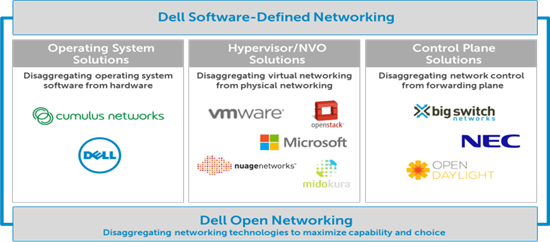Whenever I get the chance to talk with customers, the topic almost always turns toward how to keep up with the growing and continuously changing demands on their network infrastructure. Since the introduction of server and storage virtualization, data center traffic patterns are migrating from the common client/server north/south directions to east/west directions to accommodate constantly changing virtual machine (VM) flows. The rapid consumerization of IT brought about by the bring your own device (BYOD) revolution and the rise of cloud services use, are introducing a flood of voice, video, and multi-media demands on network architectures that were not designed for handling real-time services.
Common network technologies today involve sophisticated networking devices that incorporate complex schemes where each network device must individually process and handle various data packets as they traverse across the network. The amount of tools and resources needed to operate and manage these complex networks increases proportionally with the number of devices and services. The concept of software-defined networking (SDN) introduces a new approach to designing, building and managing networks by disaggregating networking technologies and centralizing control.
One of our key networking partners, Big Switch Networks, recently released an interesting infographic that traces the stages of SDN evolution over the last 20 years.
At Dell, we’ve embraced the concept of SDN from its early inception. We have a saying that the path to SDN is open. This saying is based on our fundamental belief that the foundation for migrating to SDN should be a disaggregated, open networking architecture. Introduced in 2013, our open networking strategy provides customers with disaggregated networking technologies that leverage open, innovative and best-of-breed networking solutions for the data center.
On top of that open networking foundation, all of our data center networking solutions provide customers with a choice of SDN implementations based on their unique needs. We firmly believe in the power of choice as no two customers are alike. Every customer should have:
- Choice of network operating system – from a wide range of Dell and 3rd party OS some of which enable server-like programmability within the data center with Linux-based networking
- Choice of hypervisor/network virtualization overlay (NVO) – from several network virtualization partners who help evolve the network from the hypervisor out
- Choice of a centralized control plane – from several partners that employ open standards for centralized control and applications using SDN-based controllers
In summary, the time for networks to evolve is now. The technology trends and enterprise challenges on network infrastructures today and tomorrow are demanding faster innovation and more efficiency. The good news is we can follow a familiar path where disaggregated models of networking will help us drive value and innovation for the enterprise, just as they did for server computing in our data centers. A range of SDN technologies are available to help centralize control and simplify operations. Now is the time to build for the future and Dell is here to help.

